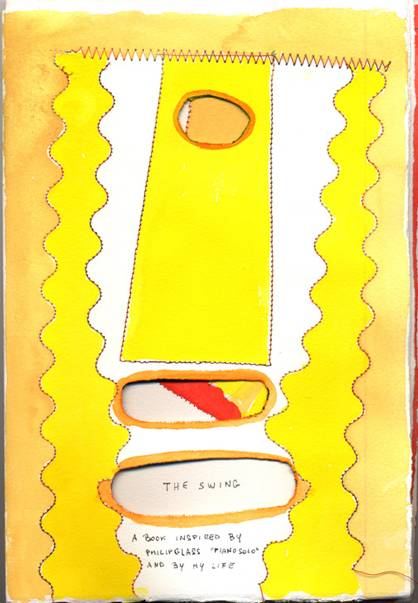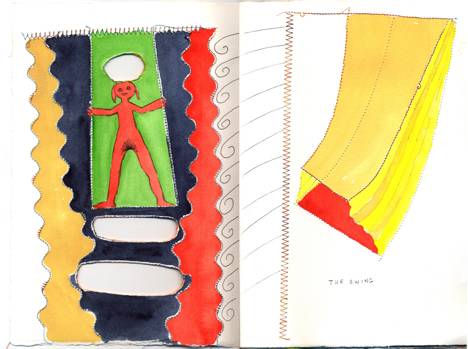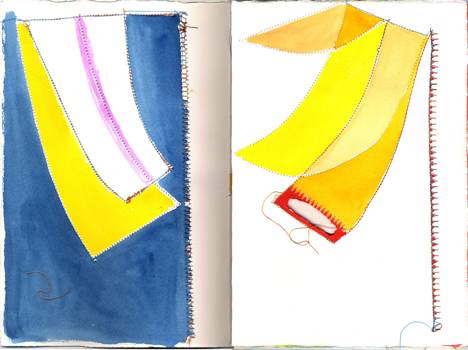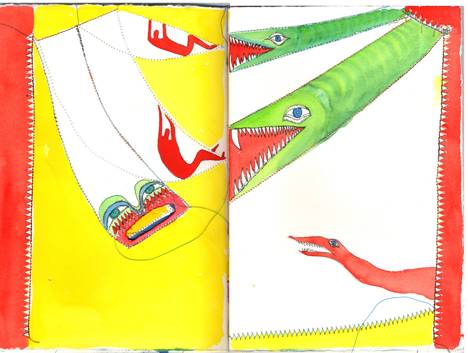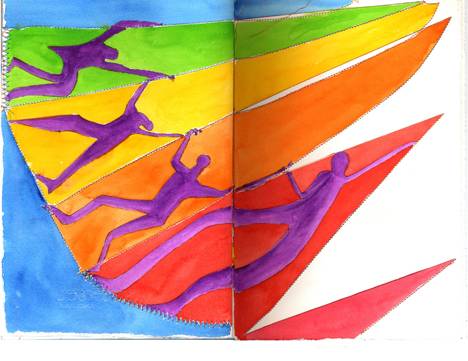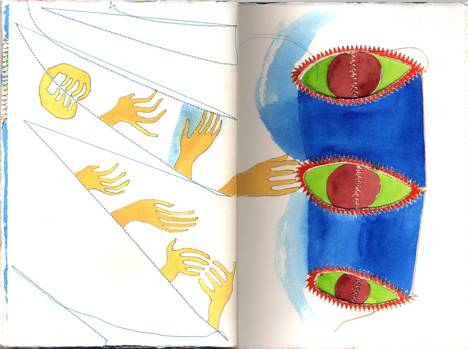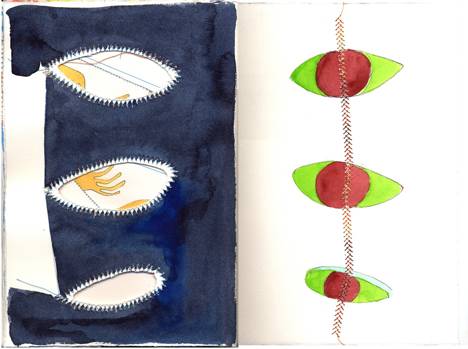

The Swing
a 16 page book inspired by “Piano Solo” by Philip Glass and by my life
by Elena Berriolo
Artist’s Statement
Rethinking the codex format, Elena Berriolo approaches the book as a hybrid space where drawing, painting, sculpture and performance can be simultaneously present. She explored this concept in her July 2012 article in the Brooklyn Rail, “Why Didn’t Lucio Fontana Use My Sewing Machine?” and in her January 2013 performance at Kunsthalle Galapagos/This Red Door, “Transcription of Piero Manzoni’s Infinite Line With Sewing Machine.”
In the Brooklyn Rail article she explained, “After drawing for a long time with the sewing machine on paper, about four years ago I started thinking about the reverse side of my drawings as being as important as the front, and I began to look for a simple way to have access to the other side. The outcome was a book.” In “Transcription of Piero Manzoni’s Infinite Line With Sewing Machine” she introduced the sewing machine as the tool able to produce a true three-dimensional line that in a book and in the sky can be moved through space.
During the performance she stated: “I believe any book represents time. When we see a book on a table, just by looking at the object, we can predict how long it will take us to read it and how long it took the writer to write it by estimating the number of pages. The pages of a book are units of individual time. An hour is an hour for everyone, but a book page represents a different, because emotional, amount of time for each of us. The possibility of ownership of the time represented by the book is the reason why I have been working with the sewing machine, because by tracing a line through the surface and including the whole book page, I am able to claim ownership of it as a time unit. Yes, I believe it is possible to use the book in a completely new way and in the process get much further in the ‘appropriation’ of time.”
The works are made with sewing machine, ink and watercolor. Each work consists of a codex structure made by folding and cutting a 22-by-30-inch sheet of paper resulting in a 16-page book each page of which is worked on both sides. Working on a “page” with a sewing machine makes possible the production of a line visible from both sides of the paper. As Berriolo works, she defines the top, visible image as “present” and the not-yet-visible one as “future.” When she is done with her line, she can turn the page and have access to the “future.” But since now she can see it (her future), she is able to re-define it as “present,” and make it her present by working with the sewing machine into the following page and then applying watercolor directly on both surfaces. At this point, what she formerly called “present” before turning the page is now out of sight though held in her memory, therefore she can call it “past.” This process is repeated for all 16 pages of the book and allows her to work within space and time, each gesture in her “present” interacting with the “future,” as happens to all of us in real life. Her book works represent her life as she has lived it through living them within the line embracing both sides of the page.
The Swing. Cover. Thread, paper, pen and watercolor, 11 x 7 1/2 x 1/4 in.
Pages 2-3, 11 x 15 in.
Pages 4-5.
Pages 6-7.
Pages 8-9.
Pages 10-11.
Pages 12-13.
Pages 14-15.
Back cover.
Elena Berriolo is online at ElenaBerriolo.com.
